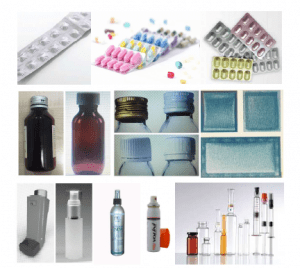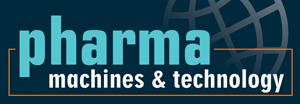
In our daily life we see and use many products since leaving the bed in the morning, till we take the bed again at night. All these products reach to us with the help of packaging for custom-made uses with appropriate quality and adequate quantity. Our life cannot be imagined without packaging. How the packaging works for variety of products (essentials and non-essentials), how the products are distributed and delivered to our doorsteps at each corner of the country, is a mysterious cycle of operations to many of the users. How mass scale manufacturing happens for most of these products and how do they get packed to our convenience, how the quality and quantity is ensured for each unit, how efciently they are handled, stored and transported to various destinations – The answer to all these queries is Automation.
Evolution turned into revolution with the help of automation. It accelerated the growth of civilization multi-fold. We cannot imagine development without automation, just like we cannot imagine product without packaging. Similarly, packaging and labelling are complement to each other, just like automation and digitalization. The other major contributors are communication and wireless connectivity, which have further fuelled rapid exchange of mass scale data and information. Altogether our development and growth are now fully indebted to these.

Coming to packaging and labelling, we can proudly say from design and development to distribution and delivery, all are now well managed with the help of automation and digitalization. From lab-scale to production scale, from primary packaging to palletization, from testing and release of incoming materials to testing and release of finished goods, all are happening through different degree of automation and digitalization. Packaging design options and labelling contents are finalized in compliance to all regulatory and customer requirements and are now digitally being processed across the industry. Automation and digitalization also helped to add many value-added features in packaging and labelling for customer safety and supply chain security, apart from brand protection and brand promotion.
During this public health related pandemic situation, and when social distancing is of prime importance,automation and digitalization, along with the wireless communication system are the best rescuing tools for the manufacturing and supply chain system. These can well support supply of essentials, including medicines and other healthcare products. They can smoothly deliver with minimum human intervention and with minimum variability in quality. They can also support to maximize outputs and optimize supply chain efficiency. Entire network system can be digitally connected to get best result, including handling, storage and distribution of the goods.
Automation – Impact on Product Shelf life and Quality
Let me define the terminologies – Automation, Shelf Life and Quality.
Automation: Simply known, automation is a tool or process to increase the level of output and productivity with mechanization. It is a process to ensure large scale reproducibility or replication of an operation with predefined parameters to produce consistent output. It is an inevitable and adaptable change, which helps business to Scale up, Survive and Sustain in global competition.
Shelf Life: It is the maximum intended life span of a product within which it maintains its originality inside a pack before it is dispensed and used.
Quality: It is a set of parameters with respect to a product’s physical, chemical, biological and organoleptic properties, infused during its development and manufacturing and is retained throughout its shelf life.
Why Automation needed
• Choice for scalability
• Support to sustainability
• Minimize human interference
• Optimize output variability
• Minimize consumer complaints
• Compliance to regulatory guidelines
• Inclusion of value-added features
All these are evolving essentially to support lifestyle transformation due to rapid consumerization and globalization. Packaging automation is applicable in every sector of manufacturing where it is an integral part of product and its processing.
Where Automation needed
Primary packaging: The first layer of enclosure which is in direct contact with the product is the primary packaging. Product feeding / filling, labelling, variable data printing, are part of primary packaging operations and mostly these are accomplished through automation for large scale operations.
Secondary packaging: One or more units of primary packs are further packed in another level of packaging. These are mostly printed with fixed and variable data. Many of the processes like labelling, cartoning, etc. are also automated in secondary packaging area. Collation, banding and bundling are also accomplished through automation
Tertiary packaging: Mostly it is the distribution or shipment pack where more units of primary packs or secondary packs are put together in an outer box, generally known as shippers. These may or may not be printed but have proper labelling with fixed and
variable data. Automation is also largely deployed here and popularly known as end-of-the-line automation.
Understanding the basics of Product and its Packaging
Packaging provides basic identity to a product. Every product has a cost – packaging adds value to it. Packaging effectively connects the products with the people. Package means pack should not age till the end usage of the product.
Packaging takes as much care for the product as a mother takes for her child. Product-packaging relationship is like man-woman – complement to each other. The definition of good packaging is: Pack which prevents aging of the product inside it.
While packaging is the last operation at manufacturing, it is the first impression at selling. Packaging boosts both – smooth selling of the product as well as smooth sailing of the brand. In a civilized society, packaging is to a product as dress is to a person – none look nice without it.
What all we need to do for Automation and ensure availability?
• Techno-Commercial feasibility studies
• Product characteristics and process flow
• Smooth flow of process inputs to the operations
• Preferably a unidirectional flow of operations
• Standardization of component specifications
• Harmonization of all associated processes
• Synchronization with other support functions
• Strong coordination between user and vendor
• Qualification, Validation and Documentation
• Training and skill development of people
• Risk Assessment and Mitigation plan
What all we need to do for Automation and ensure availability?
Product Characteristics: Sensitivity, Machinability, Dispensability.
Degradation: Thermal, Hydrolytic, Oxidative, Photolytic degradation.
Container-Closure System: Product requirement, Market requirement.
Material Options: Availability, Compatibility, Machinability, Stability.
Packaging Area: Qualification & Control, Handling & Storage System.
Feeding / Filling mechanism: Feasibility and ease of automation.
Sealing / Closing mechanism: Manual / automatic, impulse / induction.
Labelling / Coding option: Migration, Presence of leachables, legibility.
Packaging Design: Smooth machinability and ease in dispensability.
Process Design: URS / FAT / SAT, qualification, validation, process control. Subsequent protection at secondary and tertiary packaging stages.

Product feeding/filling:This is the most critical initial step, which sets the tone of packaging line. Manual to automated systems like brush box feeder, disc feeder, count filler, specially designed feeder like simtap, transfer roller, channel feeding, vibratory feeding, electronic weigh filling, volumetric filling, gravity filling, cup filler, piston and pump filler, screw and auger filler, pick and place system, vacuum filling, inert gas purging, modified and controlled atmosphere packaging, etc.
Process control improvements: Pin hole detection for primary packaging, Leak testing of the filled packs, Metal detection, Non-fill detection, Vision inspection, Check weighing, Image comparison, Metal stereo coding, Hot foil stamping, Inkjet printing, Thermal transfer printing, Laser printing, Identification through barcodes, Use of RFID, Track & trace system, and so on.
Value added features; There are many value-added features included in packaging and labelling for various intended benefits. These cannot be easily achieved without automation.
- Special purpose Dispensing Features
- Child-resistant (CR) & Senior-friendly (SF) Features
- Authentication Features
- Tamper Evidence Feature
- Anti-counterfeiting Features
- Track & Trace system
- Data Management
Advantages of Automation: It converts evolution to revolution. It brings disciplined culture at workplace. It helps civilization to progress. Other advantages are
- Minimized human interface
- Large scale production output
- Minimized variation on output
- Assurance on safety and quality
- Regulatory and Quality compliance
- Inclusion of value-added features
- Ease in data retrieval and recovery
- Enhancement of packaging standard
Limitations & Challenges: Even though automation brings lot of value addition, there are many factors which require advance analysis to adopt it successfully. Else the purpose of automation will not bring the intended benefits.
- Space – Availability
- Finance – Affordability
- Workforce – Adaptability
- Process Flow – Simplicity
- Support Functions – Strength
- Branding Benefits – Awareness
- Vendor Selection – Backward Integration
- Market Dynamics – Evolving Technologies
- Business Intelligence – Complete SWOT Analysis
Cross Functional Interactions: Like many other projects, automation also require seamless integration of functions. Cross-functional interactions are must to exchange ideas for smooth implementation with harmonised thoughts.
- Packaging component and process design
- Production, Planning and Scheduling
- Procurement and Service providers
- Engineering and Maintenance
- Quality and Validation
- IT & Communication

The standing instructions forautomation: Even though automation brings lot of advantages, there are few areas, which need attention to achieve the best out of it.
- Precision process design with linear configuration as much as possible.
- Practicing highest level of discipline without bypassing any control.
- Perioding training of the people involved in the process.
- Fine tuning the parameters and upgrading the controls.
- Periodic maintenance of each of the line equipment.






